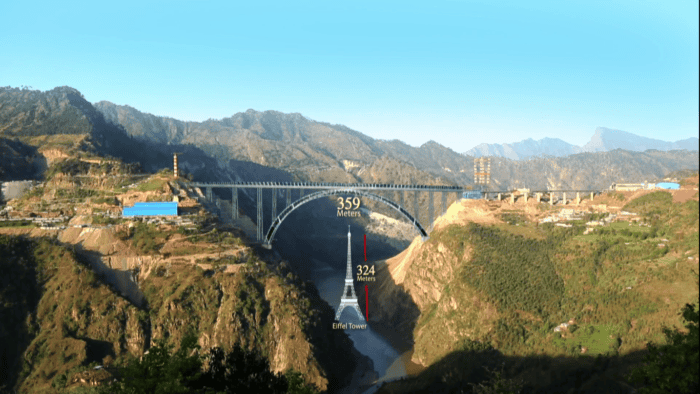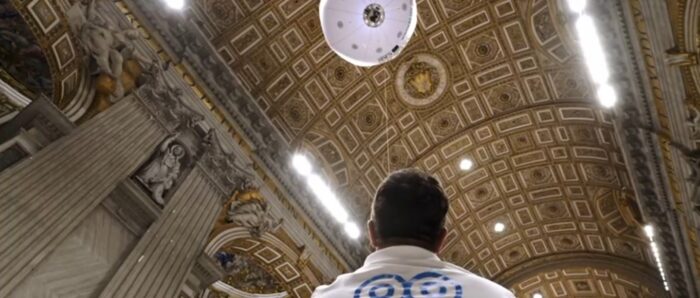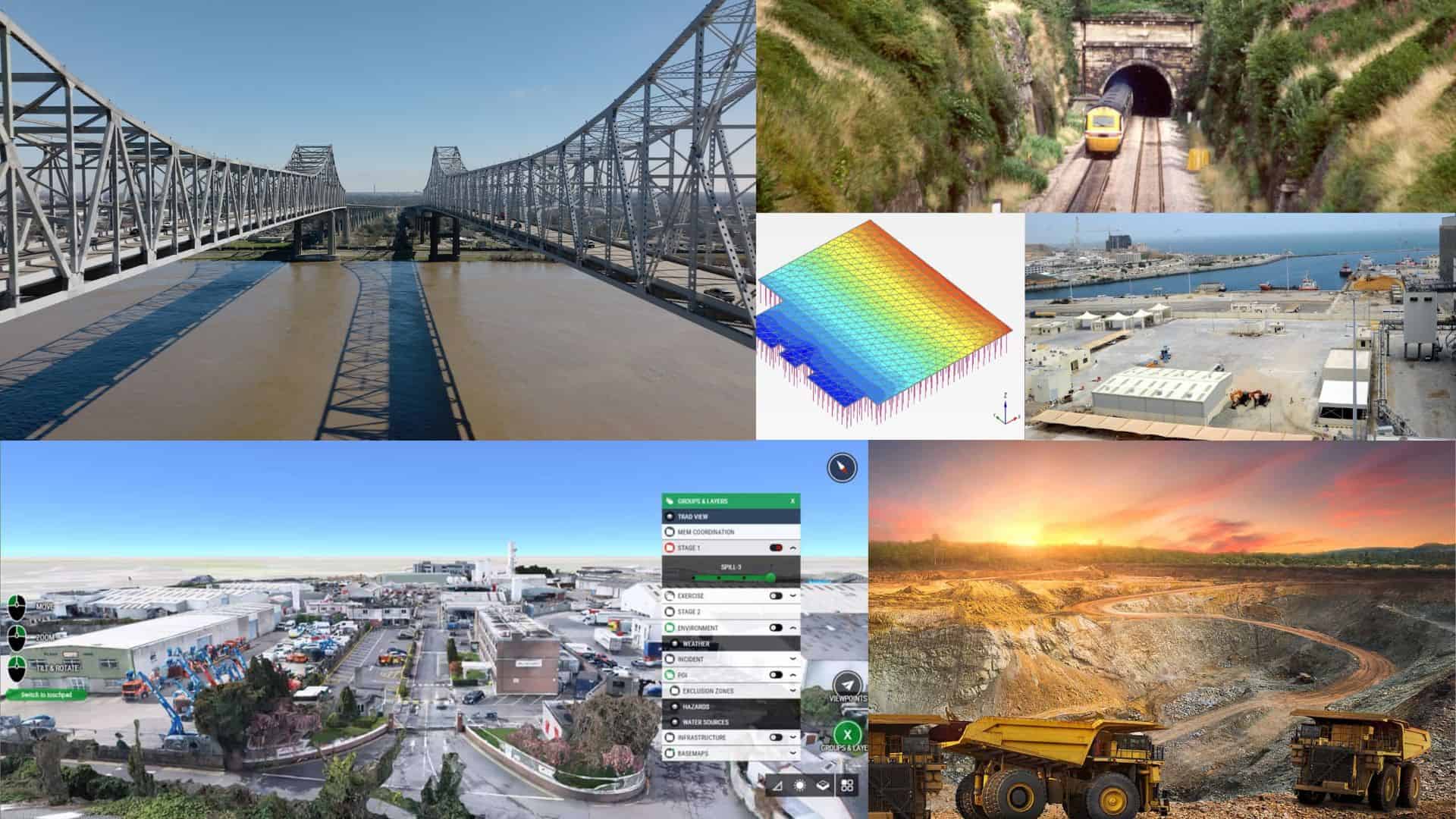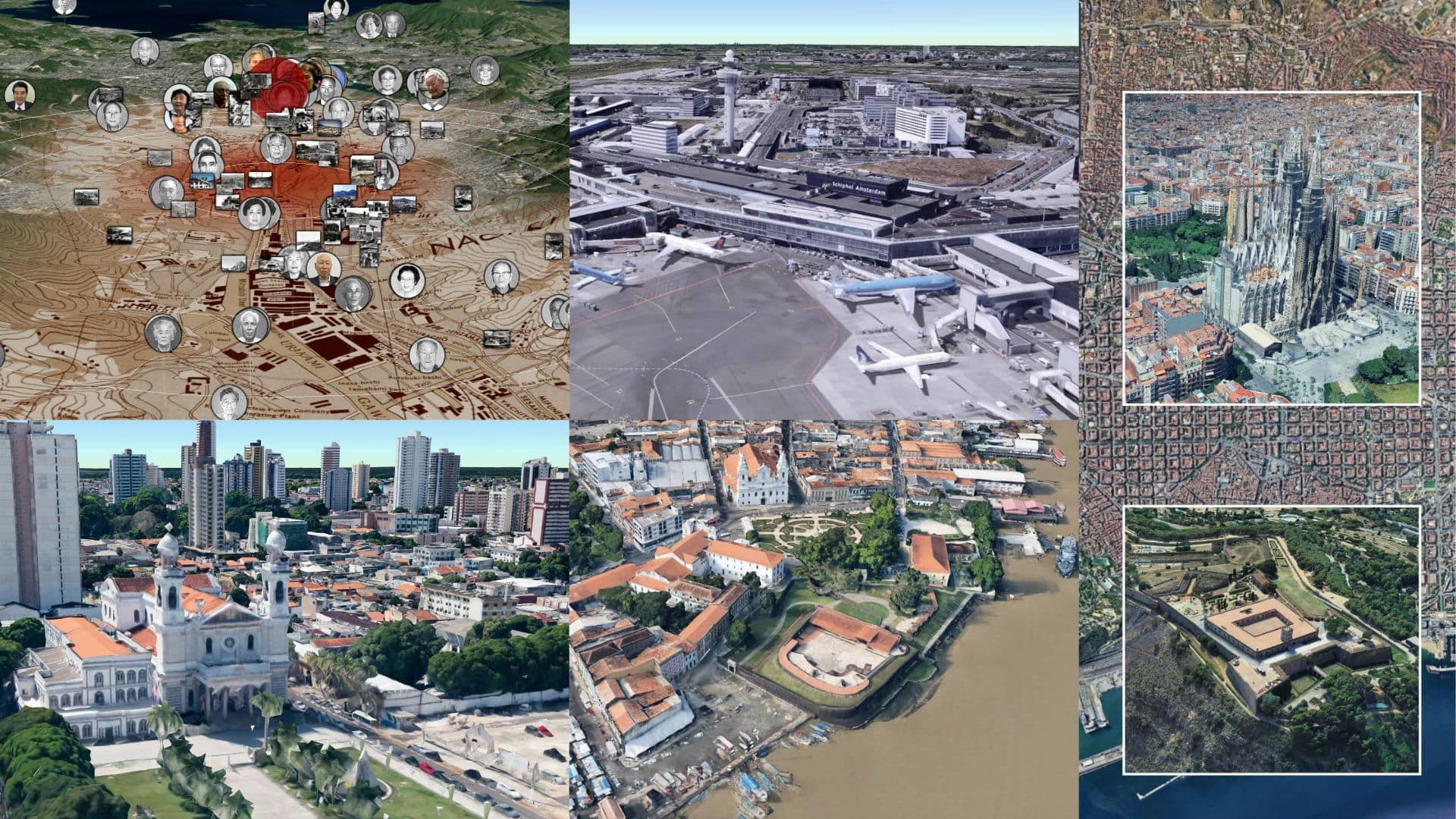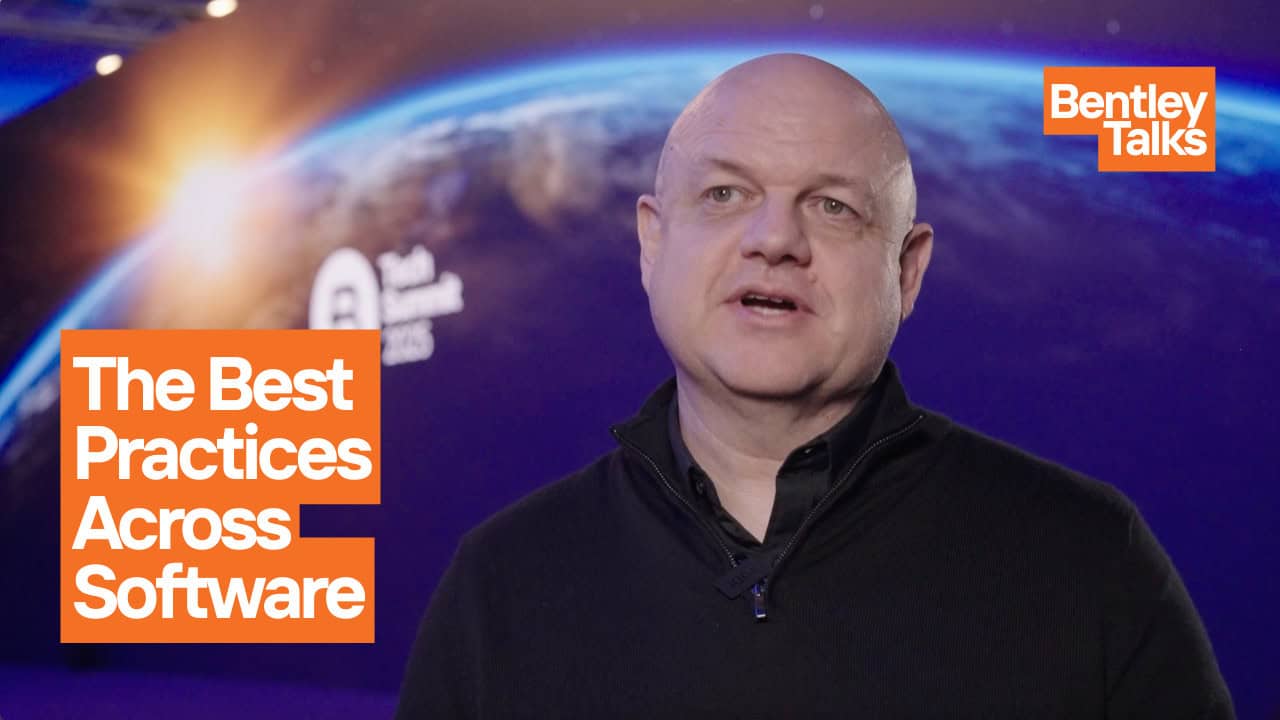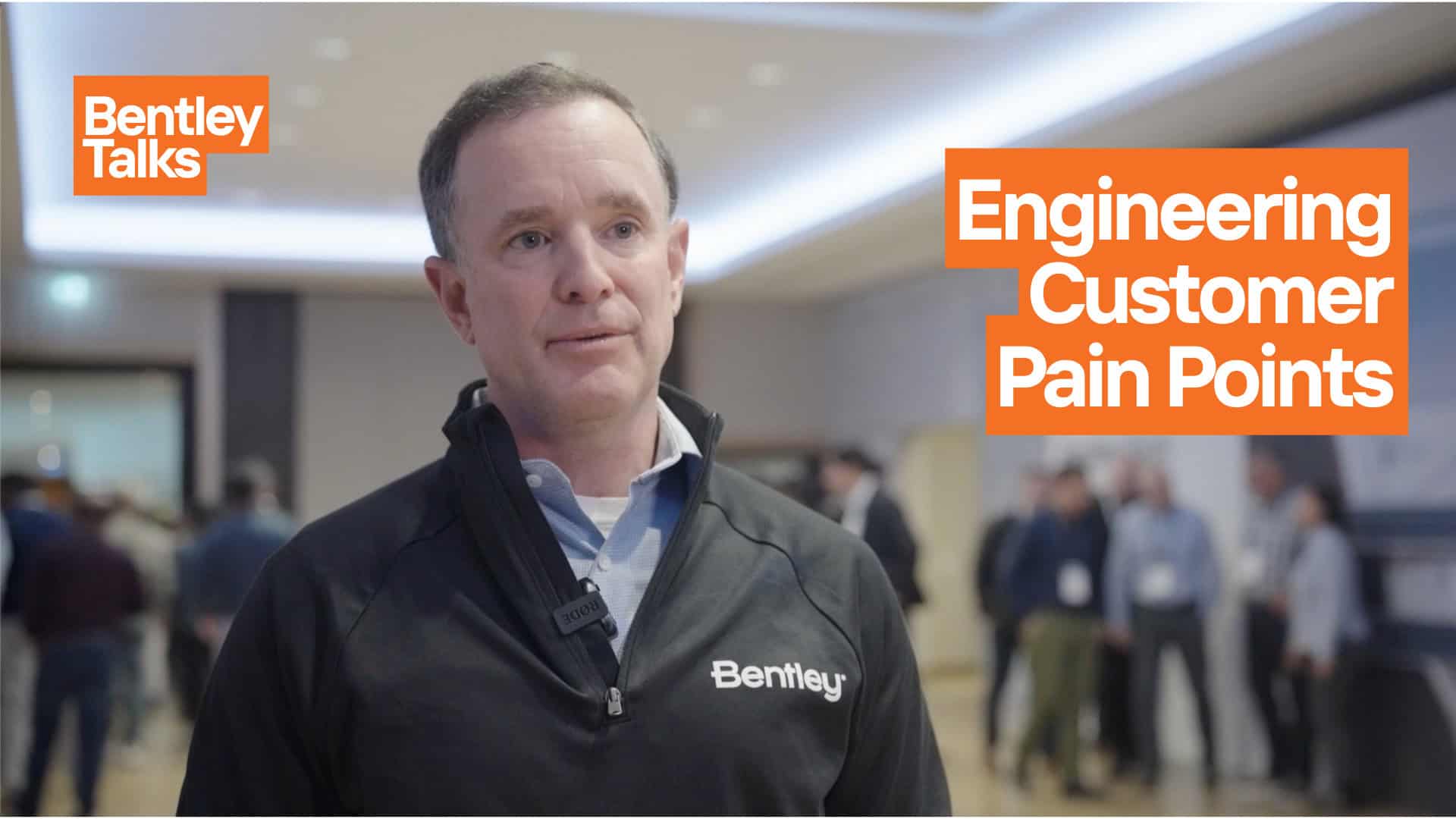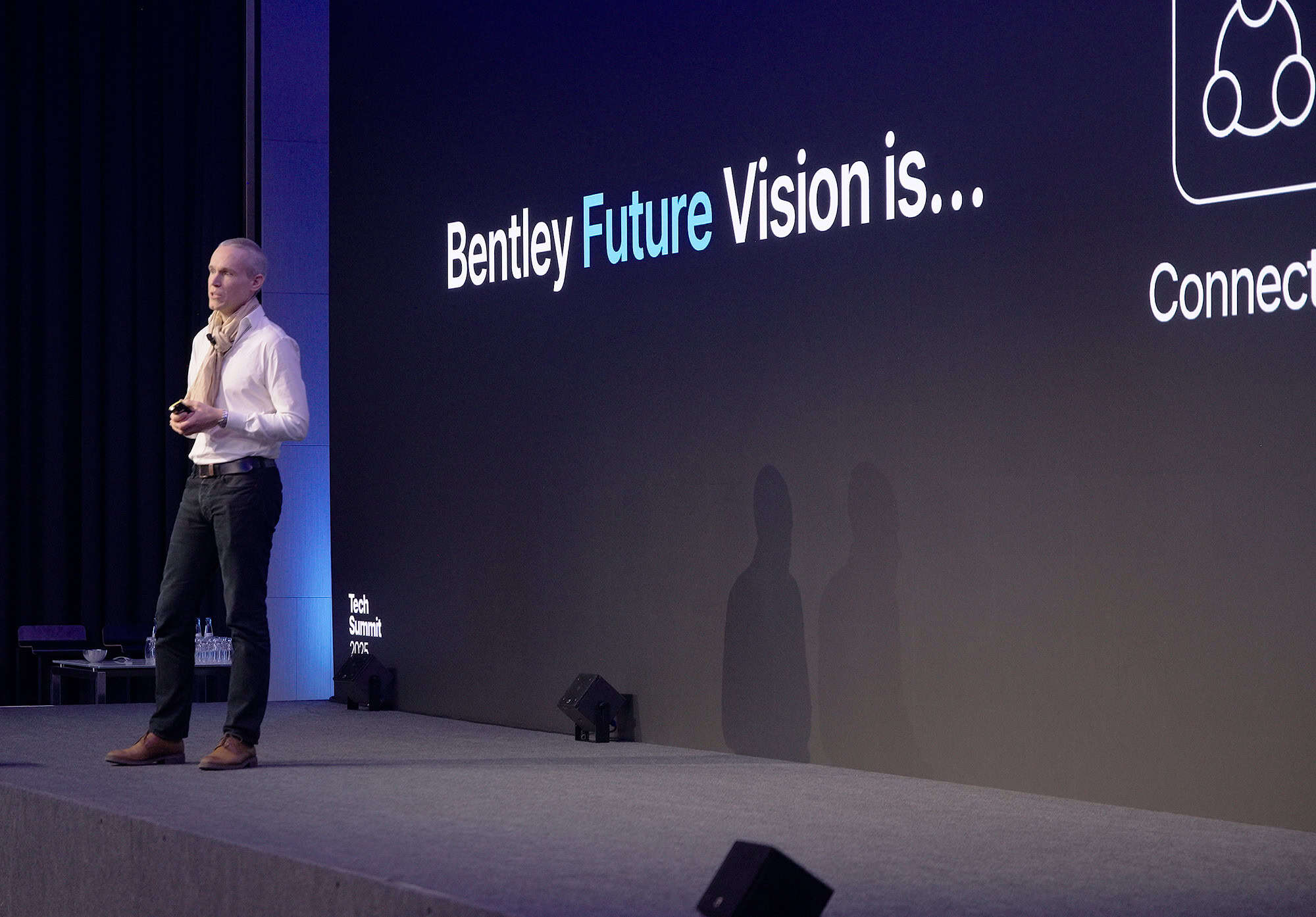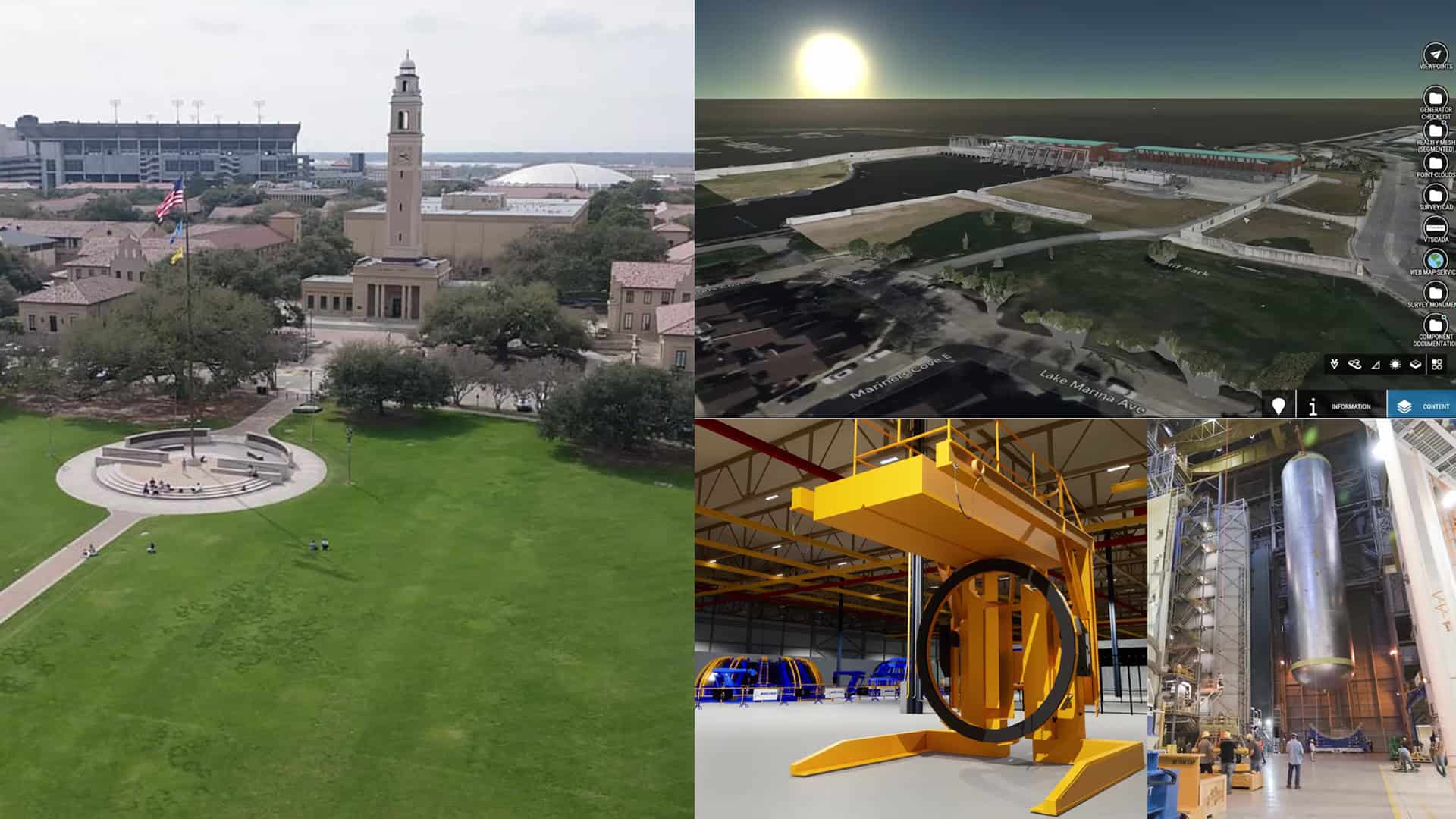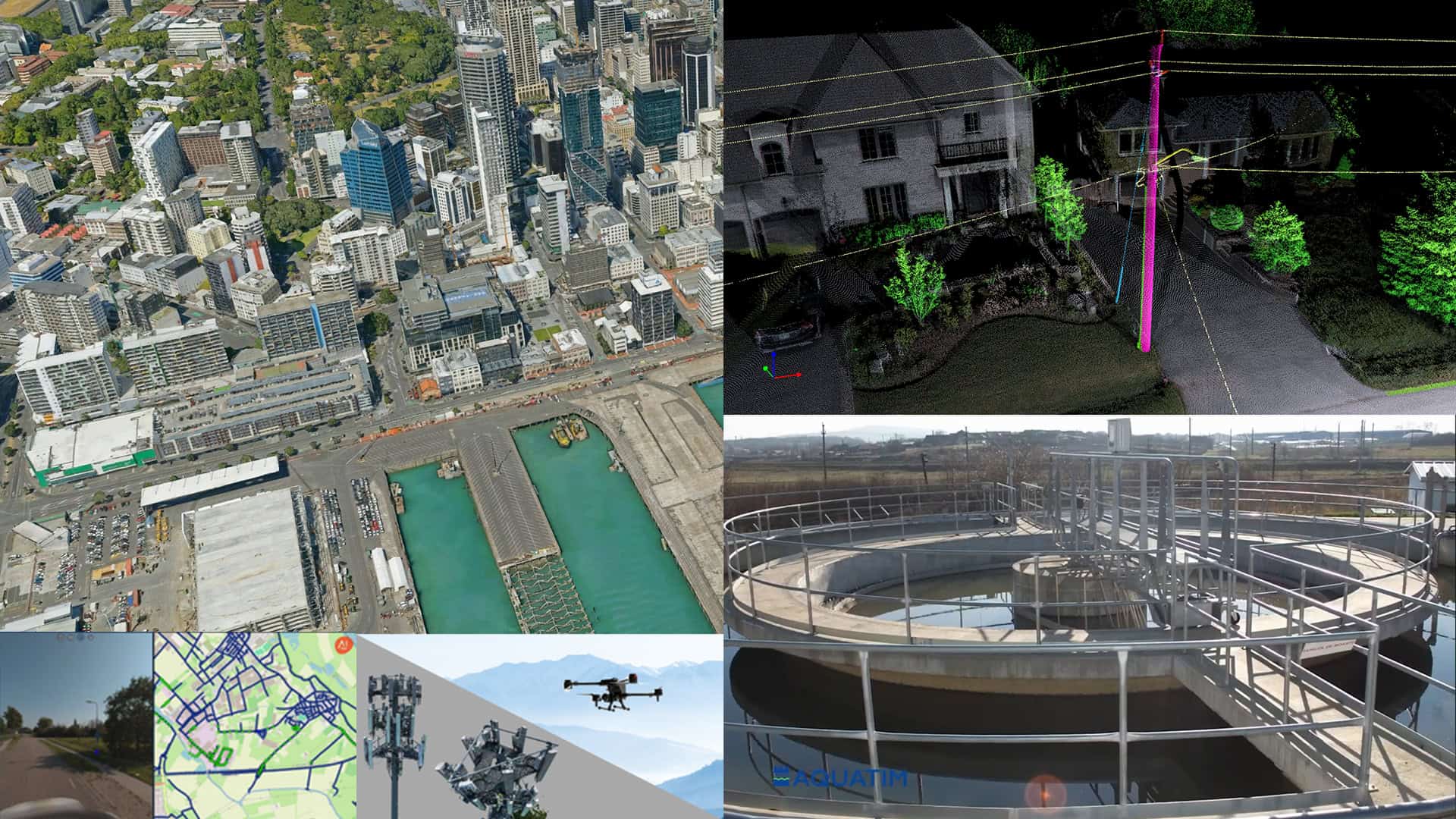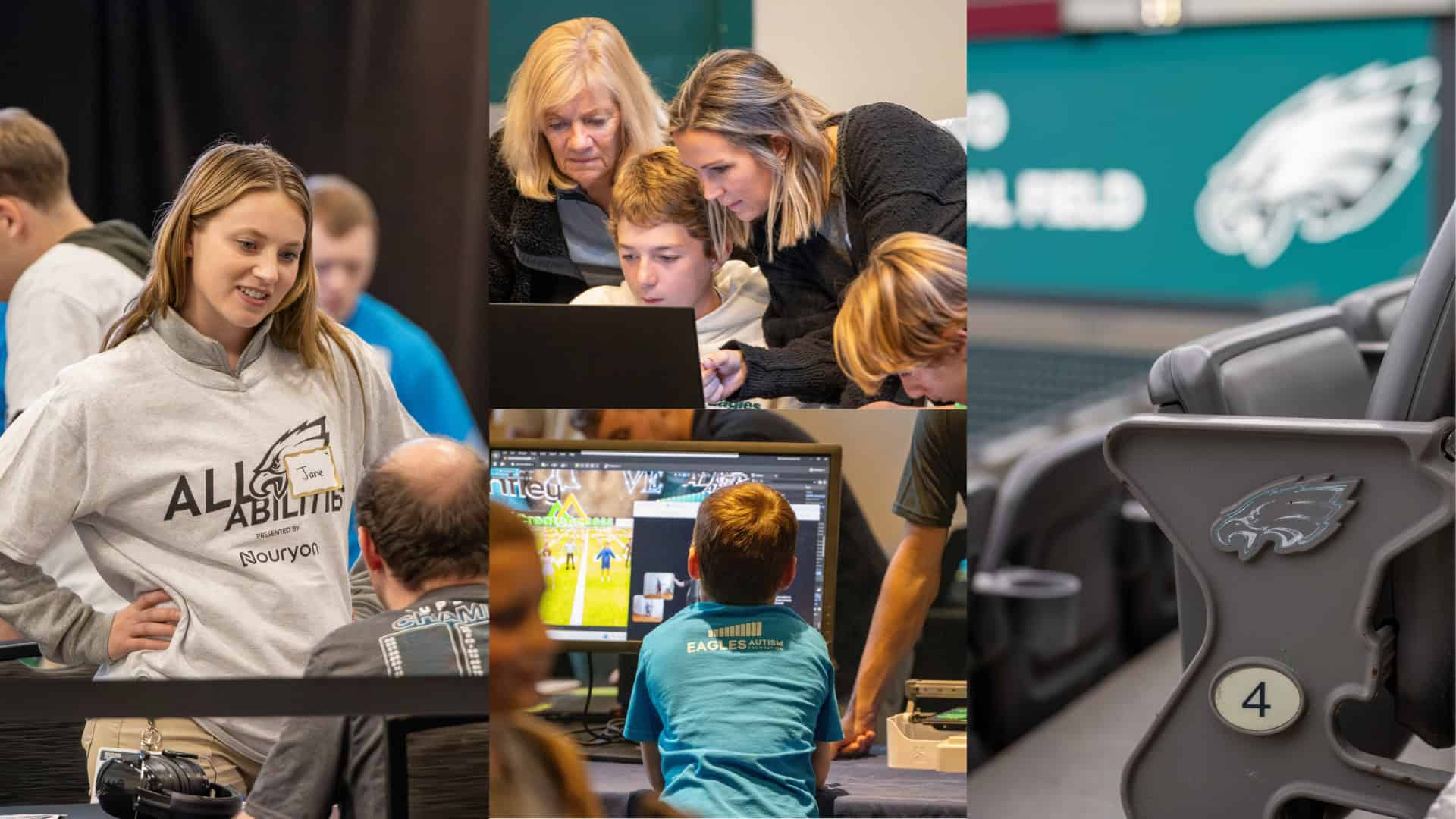Bentley Systems set out on a mission four decades ago to change the way we build things. Since then, Bentley software has helped unlock the power of data for architects, engineers, builders and operators in nearly 200 countries. Our software helps them design, build and operate roads, bridges, waterways and other critical infrastructure around the world. These projects include some of the most ambitious feats of civil engineering to date. Take a look:
1) Super Sewer
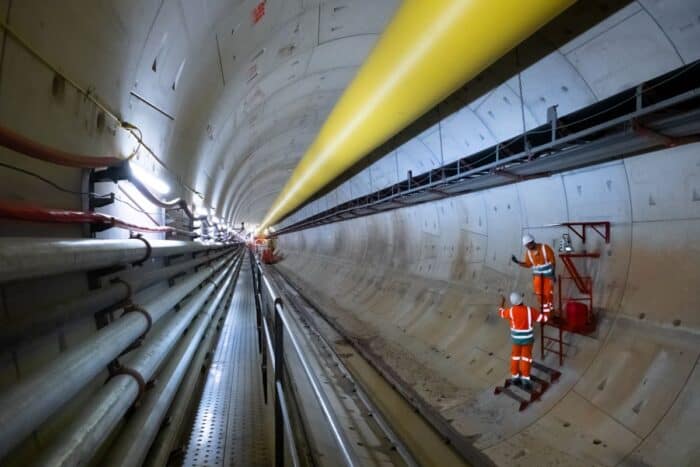 Construction workers inside a Thames Tideway tunnel, a 25k tunnel that will intercept, store and ultimately transfer sewage waste away from the River Thames. Courtesy of Tideway.
Construction workers inside a Thames Tideway tunnel, a 25k tunnel that will intercept, store and ultimately transfer sewage waste away from the River Thames. Courtesy of Tideway.What is it? The 150-year-old sewer system in London put an end to the Great Stink that plagued the British capital in the mid-1800s. But with London now being home to 8 million people, the system needs an upgrade. Three companies – Costain, VINCI and Bachy Soletanche – are working in a joint venture to design, construct and replace the eastern section of the sewer system with a new super sewer called the Thames Tideway Tunnel project. The new sewer is 25 kilometers (15.5 miles) long and 7.2 meters (23.6 feet) in diameter – almost twice the diameter of the London Underground tunnels. The project will help prevent sewage overflow into the River Thames during rainstorms. Digital twins, which are virtual representations of real-world assets, are helping the project team visualize the entire construction process. When finished, the new sewer system will mitigate wastewater pollution and significantly improve the water quality of the River Thames over the next 120 years.
Interesting Fact: The super sewer will help reduce annual discharges into the River Thames by around 95%.
2) India’s Longest Bridge
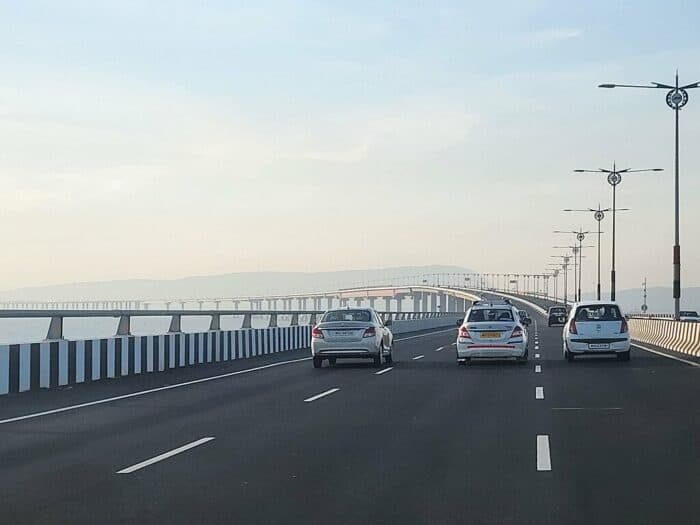 Vehicles traveling across the Atal Setu sea bridge connecting South Mumbai and Navi Mumbai. Credit: Wikimedia Commons
Vehicles traveling across the Atal Setu sea bridge connecting South Mumbai and Navi Mumbai. Credit: Wikimedia CommonsWhat is it? The Atal Setu, India’s longest bridge, opened in January 2024. It stretches 16.5 kilometers (10.3 miles) over the sea and 5.5 kilometers (3.4 miles) on land. The six-lane bridge slashes travel time between Mumbai and Navi Mumbai from two hours to just 20 minutes. The builder, SYSTRA, used 3D modeling to design the highway along with sea retaining walls, an interchange and other features.
Interesting Fact: In February 2024, about 3,000 runners participated in a marathon, half-marathon or 10-kilometer race on the bridge, taking in the breeze and scenic views.
3) EchoWater
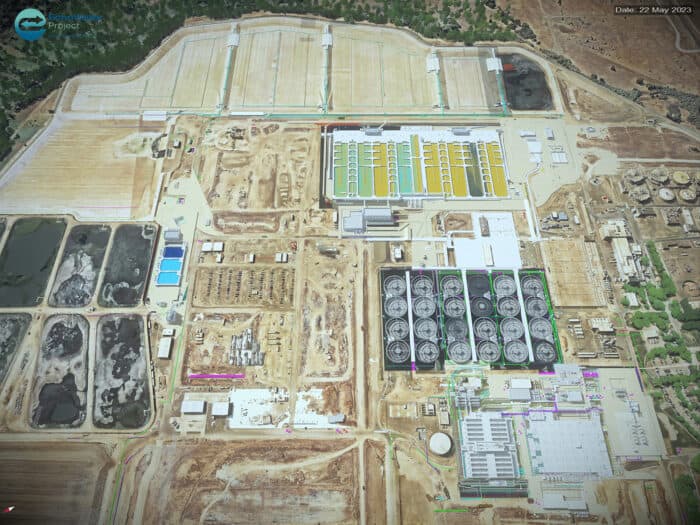 Rendering of the EchoWater project area. Credit: Regional San/Project Controls Cubed
Rendering of the EchoWater project area. Credit: Regional San/Project Controls CubedWhat is it? EchoWater is one of the largest agricultural water recycling plants in California, a state that has battled droughts and floods in recent years. The facility can treat 135 million gallons of wastewater per day, enough to fill more than 200 Olympic-sized swimming pools. The project promises to revitalize the region’s water supply, including waterways and groundwaters, which are also running low due to pumping for crop irrigation.
Interesting Fact: In 2022, a multiyear drought meant that farmers on the west side of California’s Sacramento Valley left nearly 80% of their farmland unplanted – which was about 600 square miles (enough land for 200,000 soccer fields).
4) World’s Highest Railway Bridge
What is it? In the foothills of the Himalayas, the steel Chenab Bridge hovers 1,170 feet (356.6 meters) above the Chenab River – a height taller than the Eiffel Tower. The bridge in northern India was a true team effort, involving many different partners to plan, model and build in rugged terrain and handle extreme engineering conditions. The Indian Ministry of Railways says the bridge represents a “monumental leap” toward integrating the Kashmir Valley with the city of Jammu and the broader Indian rail network.
Interesting Fact: The Chenab Bridge can withstand 8.0-magnitude earthquakes, 160 mph winds and temperatures of negative 68 F (minus 55 C).
5) St. Peter’s Basilica
What is it? Saint Peter’s Basilica in Vatican City is an architectural marvel of the Renaissance completed in 1626. Now, it has been digitally preserved through a comprehensive digital twin. This virtual model captures every intricate detail of the Basilica’s structure, which will provide valuable information about the cathedral’s structural health and enable ongoing preservation and restoration. Engineers used cutting-edge technology, including helium airships and laser scanning, to create a precise 3D model. More than 500 years after it was constructed, every detail of the magnificent cathedral built upon that early foundation is now captured in three dimensions in a virtual model constructed from millions of data points. The model lets users “zoom within millimeters on every aspect of the building’s architecture and art, inside and out, and all in proper scale and proportions,” says Bentley Systems’ Aude Camus.
Interesting Fact: The Vatican expects to welcome some 35 million visitors for the 2025 Jubilee Year of Hope. Camus says that Catholics who cannot make the pilgrimage can use the digital twin see inside Saint Peter’s. “Beyond its engineering and art historical uses, the model also opens up exciting humanist opportunities,” Camus says. “The model offers the closest experience yet to being there.”
6) New Power Generation
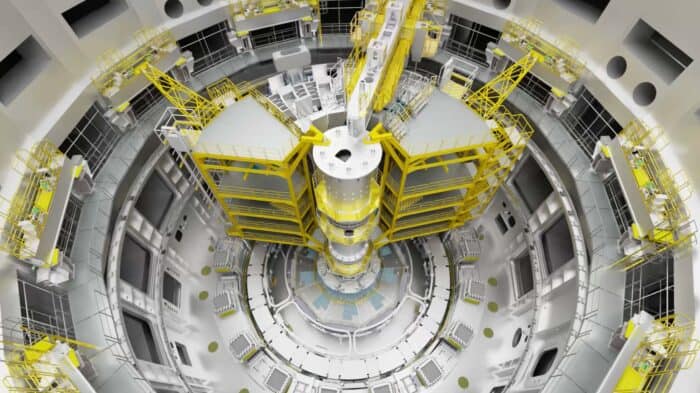 Inside view of the ITER (International Thermonuclear Experimental Reactor) assembly hall, showing complex machinery and yellow scaffolding structures for tokamak construction.
Inside view of the ITER (International Thermonuclear Experimental Reactor) assembly hall, showing complex machinery and yellow scaffolding structures for tokamak construction.What is it? The ITER project in France is an international effort to build the world’s largest nuclear fusion reactor. The reactor mimics how the sun works and uses powerful magnetic fields to sustain extremely high temperatures and create a carbon-free energy source. The project used advanced 4D immersive modeling to achieve high precision and management, and to simulate the assembly process before actual construction.
Interesting Fact: ITER’s reactor will operate at 130 million degrees Celsius— 10 times hotter than the sun’s core.
7) London’s New Artery
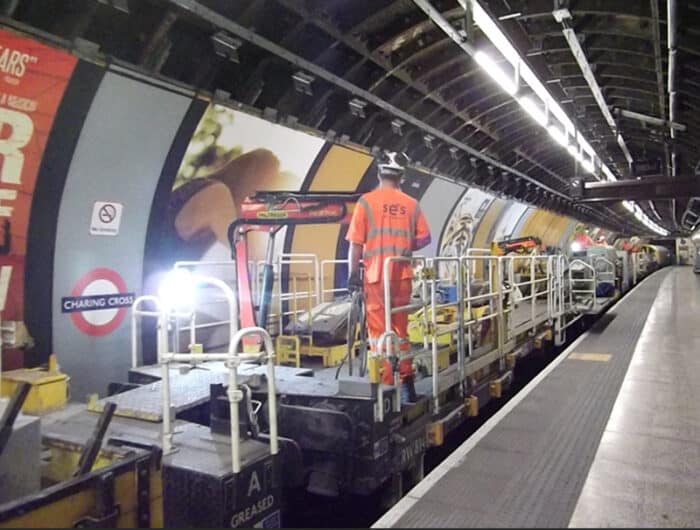 Crews work along a subway track the at Charing Cross station during the construction of the Elizabeth Line.
Crews work along a subway track the at Charing Cross station during the construction of the Elizabeth Line.What is it? London is a bustling metropolis that has long championed public transportation. But as the city grew in recent decades, it became clear that London needed a new rail line. The challenge was to connect 31 existing and 10 new railway stations that offered east-to-west transport — without disrupting current train schedules. The solution was the Elizabeth Line. Using Bentley software, the builder, Crossrail, used 3D modeling and the latest engineering software to integrate the new and the old, honoring London’s transport heritage and innovation.
Interesting Fact: The Elizabeth Line opened in May 2022 and served 150 million passengers in its first year of operation.
8) Rail Baltica
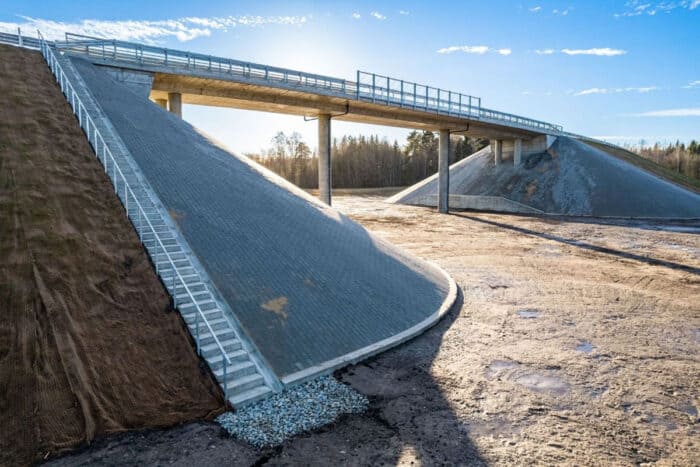 A concrete bridge along the Rail Baltica railway during construction.
A concrete bridge along the Rail Baltica railway during construction.What is it? Rail Baltica, the largest Baltic infrastructure project in a century, will connect Estonia, Latvia and Lithuania with a high-speed railway spanning 870 kilometers (540 miles). Four high-speed trains per day will be able to reach speeds of up to 234 kilometers per hour (145 mph), linking the Baltic capitals of Tallinn, Kaunas and Vilnius. The 300 partners involved in the project include Spain’s IDOM, which is using 3D software to design 44% of the line, including viaducts, bridges and power.
Interesting Fact: The high-speed railway will also connect the Baltic states to Warsaw, Berlin and the European rail network.
9) World’s Largest Water Treatment Plant
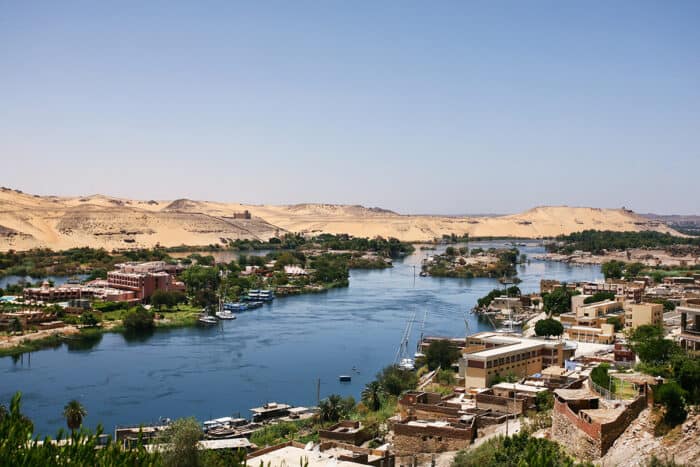 Aerial view of the Nile River winding through a desert community.
Aerial view of the Nile River winding through a desert community.What is it? Located in the Nile Delta in Egypt, the New Delta water treatment plant can treat 7.5 million cubic meters of wastewater per day and irrigate 2,200 acres in the Western Desert. That makes it the largest water treatment plant in the world. Almost all of Egypt’s freshwater comes from the Nile River, and its farming industry uses 85% of the country’s share of the river. By 2025, Egypt is projected to be a water-scarce nation. The infrastructure company PGESCo, in a joint venture with AAW, used infrastructure engineering to improve collaboration and material reuse.
Interesting Fact: The New Delta plant holds four Guinness World Records for its size and capacity. The plant plays a key role in Egypt’s plan to secure sustainable water resources by 2050.
10) Water For the Grand Canyon
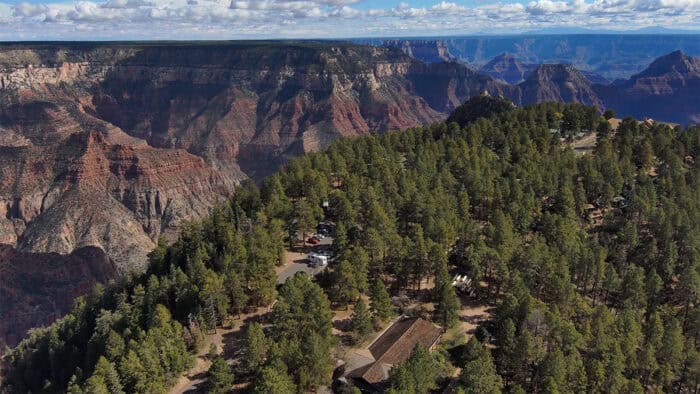 Aerial view of a forested area on the North Rim of the Grand Canyon.
Aerial view of a forested area on the North Rim of the Grand Canyon.What is it? The Grand Canyon in Arizona needs no introduction. As one of the world’s natural wonders, it draws over 6 million visitors every year. Average temperatures range from 85 F (29 C) at the South Rim to more than 105 F (40 C) at the bottom of the canyon. The Transcanyon Waterline, built in the 1960s, is a pipeline that transports water about 12 miles (20 kilometers) from a spring on the North Rim to parts of the inner canyon and the South Rim, including 800 historic buildings. But since 2010, the waterline has experienced more than 85 major breaks. The U.S. National Park Service selected engineering firm HDR Inc. to design a replacement of the crucial pipeline. HDR has used drones and digital modeling to overcome the canyon’s challenging terrain.
Interesting Fact: It often costs the National Park Service more than $25,000 to fix just one pipeline break in the canyon. Repair crews can access breaks in the canyon only by trail or by helicopter.


